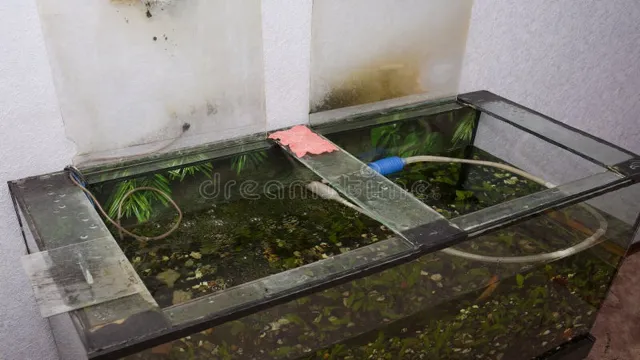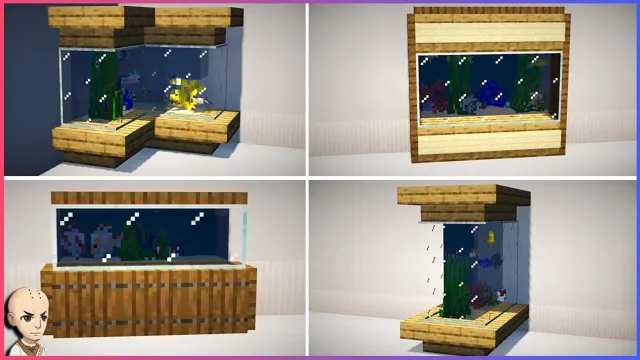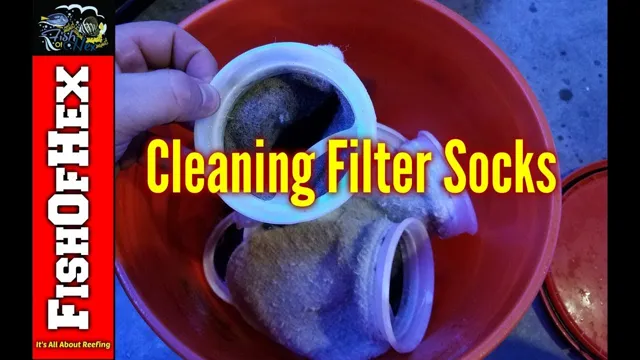Are you someone who loves the sight of plants but has no outdoor space to grow them? Or maybe you’re an avid aquarium owner who wants to jazz up your aquatic world with some greenery? Whatever the case may be, caring for plants in your aquarium is a rewarding and exciting experience that not only adds aesthetic value but also benefits the overall health of your aquatic pets. Aquarium plants come in various shapes, sizes, and colors, and each requires specific care to thrive. Aquatic plants help to oxygenate the water in your tank, absorb nitrates and other nutrients, and provide hiding spots for your fish and other aquatic creatures.
With the right tools and techniques, you can create a beautiful and natural-looking underwater haven for your aquatic pets. In this blog, we’ll explore the ins and outs of caring for plants in your aquarium, from selecting the right species to maintaining proper lighting, nutrition, and water quality. You’ll learn how to choose the best substrate for your plants, the importance of CO2 injection, and how to diagnose and treat common plant problems.
So whether you’re a seasoned aquarium pro or just starting out, follow along with us as we dive into the world of aquarium plant care. Get ready to add life and color to your underwater world with lush and vibrant aquatic plants!
Choosing the Right Plants
When it comes to caring for plants in your aquarium, choosing the right plants is crucial. Some plants thrive in low light and low nutrient environments, while others require high light and lots of nutrients. It’s important to research the specific needs of each plant before adding them to your aquarium.
Additionally, consider the size and growth rate of the plants. Fast-growing plants may require more frequent trimming to prevent them from overtaking your aquarium, while slow-growing plants may not provide enough oxygen for your fish. It’s also a good idea to choose plants that are compatible with the species of fish in your aquarium, as certain plants may be eaten or uprooted by certain fish.
By taking the time to carefully consider the plants you add to your aquarium, you can ensure a healthy and thriving ecosystem for your aquatic pets.
Consider Water Parameters
When it comes to choosing the right plants for your aquarium, it’s important to consider the water parameters. Different plants have different needs, so it’s essential to understand the requirements of each one before adding them to your tank. For example, some plants thrive in hard water while others prefer soft water.
Similarly, some species require a specific pH level, while others can tolerate a wide range of pH values. It’s also crucial to consider the lighting requirements of different plants and ensure that you’re providing enough light for them to grow. By understanding the water parameters required for each plant species, you can create a healthy and thriving aquatic environment for your fish and plants.
So, always research the water requirements of any plant before buying, and choose the ones that are best suited to your aquarium’s conditions. This way, you can ensure that your plants and fish are happy and healthy in their aquatic home.

Match with Lighting
When choosing plants for your home, it’s important to consider the type of lighting in the room. Plants need different levels of light depending on their species and you don’t want to place a low light plant in a sunny spot or a high light plant in a shaded area. Be sure to research the light requirements for your specific plants to ensure they receive the proper amount of light to thrive.
Some plants that do well in low light areas include pothos, snake plants, and philodendrons while plants like succulents, cacti, and herbs flourish in bright, direct light. Remember, giving your plants the right amount of light is crucial for their growth and longevity. Don’t forget to regularly rotate your plants around the room to ensure all sides are receiving adequate light and avoid placing plants too close to windows with direct sunlight, as this can cause leaf burn.
By matching your plants with proper lighting, you’ll be able to create a healthy and thriving indoor garden in no time.
Select Low-Maintenance Plants
When it comes to choosing plants for your garden or home, it’s essential to pick the ones that can thrive with minimal care and attention. Low-maintenance plants are an excellent option for those who want to enjoy the beauty of nature without having to invest too much time and effort in its upkeep. These plants are typically hardy, resilient, and adaptable, making them a popular choice for beginners and busy homeowners alike. (See Also: How to Get to Sea Aquarium from Harbourfront: The Ultimate Guide for a Memorable Visit)
Some of the best low-maintenance plants to consider include succulents, cacti, and ferns, all of which require minimal watering and can tolerate a wide range of temperature and light conditions. By choosing the right plants for your space, you can create a beautiful and sustainable garden that requires minimal upkeep and provides maximum enjoyment. So, whether you’re a seasoned green thumb or just starting, don’t be afraid to experiment with different varieties and find the ones that work best for your lifestyle and preferences.
Setting up the Aquarium
When it comes to setting up an aquarium, caring for plants can be a major concern for beginners. The first thing to consider is the type of plants you want to keep and the conditions they need in terms of lighting and nutrients. Some plants require high levels of CO2 and fertilizer, while others can thrive in low-tech setups with minimal intervention.
Make sure you choose plants that are compatible with your fish and won’t be eaten or uprooted. Once you’ve selected your plants, it’s time to arrange them in the tank. Start with a layer of substrate like sand or gravel, then add any rocks or driftwood you want to use as hardscape elements.
Finally, carefully place your plants, taking care not to damage their roots or leaves. You may need to adjust the lighting and introduce fertilizers or CO2 to ensure your plants flourish. By following these steps and doing your research, you can create a beautiful and healthy aquatic environment for your fish and plants to thrive.
Create a Substrate Layer
To set up your aquarium properly, it is important to create a substrate layer to help support the health of your fish and plants. The substrate layer is essentially the foundation of your tank and should be made up of a variety of materials to promote proper nutrient cycling and oxygen exchange. This layer should be at least two inches deep, with a variety of grain sizes to allow for water flow.
Adding live plants can also help create a healthy substrate layer by reducing the buildup of ammonia and nitrogen from fish waste and converting it into useful nutrients for the plants. Remember, the substrate layer is crucial for the overall health of your aquarium, providing a safe and natural habitat for your aquatic life.
Add Fertilizer and Supplements
When setting up your aquarium, it’s important to add fertilizers and supplements for your aquatic plants. These additives provide essential nutrients to encourage healthy plant growth and help prevent algae growth. There are a variety of fertilizers and supplements available on the market, such as liquid or root tabs.
Liquid fertilizers are a great option for plants that absorb nutrients through their leaves, while root tabs are ideal for plants with root systems that absorb nutrients from the substrate. Additionally, supplements like CO2 or iron can be added to enhance plant growth and coloration. It’s important to research the specific needs of your aquarium plants and choose the appropriate fertilizers and supplements accordingly.
By providing your plants with the necessary nutrients, you’ll create a thriving aquatic ecosystem for your fish to enjoy.
Maintaining Your Plants
Maintaining and caring for plants in an aquarium can be a rewarding experience. First, consider the specific needs of the plants you have chosen. Different types of plants require different levels of light, nutrients, and carbon dioxide.
For example, some plants may thrive in low light while others require bright, direct light. Additionally, some plants may need extra nutrients, such as iron and magnesium, to grow and stay healthy. It’s important to research your plants’ needs and create an environment that caters to them.
Regular maintenance is also crucial in keeping your plants healthy. This includes trimming dead leaves and maintaining a consistent water temperature and pH level. Using an aquarium fertilizer can also help maintain the health of your plants. (See Also: How to Change Freshwater Aquarium Water: A Step-by-Step Guide for Healthy Fish)
Remember, caring for your aquarium plants is a continuous process, but the beauty they bring to your underwater world is well worth the effort.
Monitor Water Quality
Maintaining your plants is crucial for their growth and health, and monitoring water quality is a significant part of that. High-quality water ensures the uptake of nutrients in the roots and the overall development of the plant. It’s essential to use clean water that is free of any contaminants that can harm the plants’ growth.
To achieve this, you can use rainwater or filtered tap water to irrigate your plants. You can also test your water quality using a pH meter or a water testing kit to know the level of various minerals such as chlorine and hardness. This information will help you adjust the pH of the water to the optimal level for your plant and ensure that they receive the necessary minerals to grow healthy and strong.
Remember that plants are just like humans; they need clean water to thrive, and by maintaining the water quality, you’ll be ensuring their long-term health.
Prune and Trim Regularly
Pruning and trimming regularly is a crucial part of maintaining your plants. Not only does it ensure that your plants look neat and tidy, but it can also help stimulate new growth and ensure that your plants are healthy. Pruning involves removing dead or damaged parts of a plant, while trimming involves cutting back healthy parts to maintain a certain shape or size.
Regular pruning and trimming can also prevent problems like pests and disease from spreading throughout your plants. However, it’s important to be careful when pruning and trimming, as cutting too much or too often can harm your plants. A general rule of thumb is to prune and trim your plants in the early spring, just before the growing season begins.
By doing so, you can help your plants thrive throughout the year.
Troubleshooting Common Issues
Taking care of plants in an aquarium can be a bit tricky, but with the right knowledge, you can maintain a thriving underwater garden. One common issue is algae growth, which can be caused by too much light or excess nutrients in the water. To combat this problem, make sure to only keep your light on for 8-10 hours a day, and don’t overfeed your fish or add too much fertilizer.
Another issue is yellowing or browning leaves, which could be a sign of nutrient deficiency. Adding some liquid or tablet fertilizer can help replenish the necessary nutrients. It’s also important to regularly clean your aquarium and prune any dead or dying plant material.
By taking these steps, you’ll be well on your way to creating a beautiful and healthy planted aquarium. Remember, a little bit of patience and care can go a long way in making your aquatic plants happy and thriving.
Conclusion
In conclusion, taking care of plants in your aquarium can be a fun and rewarding experience. Remember to choose the right plants for your specific aquarium conditions, provide proper lighting and nutrient levels, and maintain a consistent water temperature. Don’t forget to regularly prune and trim your plants to keep them healthy and looking their best. (See Also: How to Get to the Albuquerque Aquarium: A Comprehensive Guide for Visitors)
With a little effort and care, your aquarium plants will thrive and bring a splash of natural beauty to your underwater world. After all, happy plants make for happy fish, and happy fish make for a happy aquarist. So, dive in and enjoy the breathtaking aquatic ecosystem you’ve created.
Just don’t forget to water your plants!”
FAQs
What are the benefits of having live plants in an aquarium?
Live plants provide oxygen, absorb excess nutrients, and provide hiding places for fish.
How often should I change the water in my aquarium with plants?
It is recommended to change 10-20% of the water every week to ensure a healthy environment for both plants and fish.
Can I use regular plant fertilizer for my aquarium plants?
No, you should use specialized fertilizers made specifically for aquatic plants as they contain the necessary nutrients without harming the fish.
How much light do my aquarium plants need?
Different plants require different levels of light, but generally, aquarium plants need around 8-12 hours of light per day.
What are some common issues that can arise when caring for aquarium plants?
Issues such as algae overgrowth, nutrient deficiencies, and plant diseases can occur if proper care and maintenance are not practiced.
How can I control algae growth in my planted aquarium?
You can reduce algae by reducing light exposure, avoiding overfeeding, and adding algae eaters or floating plants to help absorb excess nutrients.
Can I add CO2 to my aquarium to help my plants grow better?
Yes, using a CO2 system can benefit plant growth, but it should be used carefully as too much CO2 may harm the fish.







